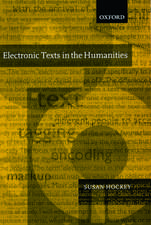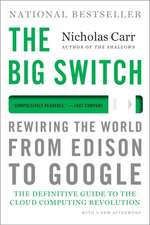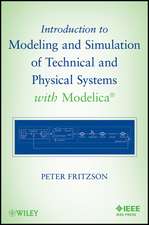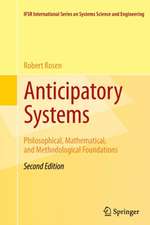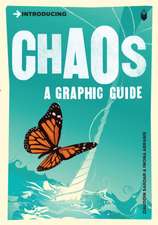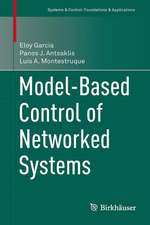Information and Life
Autor Gérard Battailen Limba Engleză Hardback – 12 aug 2013
This book aims at bridging this gap. It proposes an abstract definition of information based on the engineers' experience which makes it usable in life sciences. It expounds information theory and error-correcting codes, its by-products, as simply as possible. Then, the fundamental biological problem of heredity is examined. It is shown that biology does not adequately account for the conservation of genomes during geological ages, which can be understood only if it is assumed that genomes are made resilient to casual errors by proper coding. Moreover, the good conservation of very old parts of genomes, like the HOX genes, implies that the assumed genomic codes have a nested structure which makes an information the more resilient to errors, the older it is.
The consequences that information theory draws from these hypotheses meet very basic but yet unexplained biological facts, e.g., the existence of successive generations, that of discrete species and the trend of evolution towards complexity. Being necessarily inscribed on physical media, information appears as a bridge between the abstract and the concrete. Recording, communicating and using information exclusively occur in the living world. Information is thus coextensive with life and delineates the border between the living and the inanimate.
| Toate formatele și edițiile | Preț | Express |
|---|---|---|
| Paperback (1) | 558.87 lei 38-44 zile | |
| SPRINGER NETHERLANDS – 9 aug 2015 | 558.87 lei 38-44 zile | |
| Hardback (1) | 567.05 lei 38-44 zile | |
| SPRINGER NETHERLANDS – 12 aug 2013 | 567.05 lei 38-44 zile |
Preț: 567.05 lei
Preț vechi: 708.81 lei
-20% Nou
Puncte Express: 851
Preț estimativ în valută:
108.53€ • 111.85$ • 91.63£
108.53€ • 111.85$ • 91.63£
Carte tipărită la comandă
Livrare economică 26 februarie-04 martie
Preluare comenzi: 021 569.72.76
Specificații
ISBN-13: 9789400770393
ISBN-10: 9400770391
Pagini: 266
Ilustrații: XIV, 260 p.
Dimensiuni: 155 x 235 x 22 mm
Greutate: 0.52 kg
Ediția:2014
Editura: SPRINGER NETHERLANDS
Colecția Springer
Locul publicării:Dordrecht, Netherlands
ISBN-10: 9400770391
Pagini: 266
Ilustrații: XIV, 260 p.
Dimensiuni: 155 x 235 x 22 mm
Greutate: 0.52 kg
Ediția:2014
Editura: SPRINGER NETHERLANDS
Colecția Springer
Locul publicării:Dordrecht, Netherlands
Public țintă
ResearchCuprins
1. Introduction.- 2. What is information? 2.1 Information in a usual meaning. 2.2 Features of information as a scientific entity. 2.3 Comments on the definitions of information. 2.4 An information as a nominable entity. 2.5 Short history of communication engineering. 2.6 Communication over space or over time.- 3. Basic principles of communication engineering. 3.1 Physical inscription of a single symbol. 3.2 Physical inscription of a sequence. 3.3 Receiving a binary symbol in the presence of noise. 3.4 Communicating sequences in the presence of noise.- 4. Information theory for literal communication. 4.1 Shannon’s paradigm and its variants. 4.2 Quantitative measures of information. 4.3 Source coding.- 5. Channel capacity and channel coding. 5.1 Channel models. 5.2 Capacity of a channel. 5.3 Channel coding needs redundancy. 5.4 On the fundamental theorem of channel coding. 5.5 Error-correcting codes.- 6. Information as a fundamental entity. 6.1 Algorithmic information theory. 6.2 Emergent information in populations. 6.3 Physical entropy and information. 6.4 Information bridges the abstract and the concrete.- 7. An introduction to the second part. 7.1 Relationship with biosemiotics. 7.2 Content and spirit of the second part.- 8. Heredity as a communication problem. 8.1 The enduring genome. 8.2 Consequences meet biological reality. 8.3 A toy living world. 8.4 Identifying genomic error-correcting codes.- 9. Information is specific to life. 9.1 Information and life are indissolubly linked. 9.2 Semantic feedback loops. 9.3 Information as a fundamental entity. 9.4 Nature as an engineer.- 10. Life within the physical world. 10.1 A poorly understood divide. 10.2 Maxwell’s demon in physics and in life.- 10.3 A measurement as a means for acquiring information.- 11. Conclusion.
Recenzii
From the book reviews:
“This book deals with information theory and life sciences. … The readership of this book is mathematicians/information theorists/communications engineers who are interested in biology, and biologists who want to apply information theory to biology.” (Yûichirô Kakihara, Mathematical Reviews, July, 2014)
“This book deals with information theory and life sciences. … The readership of this book is mathematicians/information theorists/communications engineers who are interested in biology, and biologists who want to apply information theory to biology.” (Yûichirô Kakihara, Mathematical Reviews, July, 2014)
Textul de pe ultima copertă
Communication, one of the most important functions of life, occurs at any spatial scale from the molecular one up to that of populations and ecosystems, and any time scale from that of fast chemical reactions up to that of geological ages. Information theory, a mathematical science of communication initiated by Shannon in 1948, has been very successful in engineering, but biologists ignore it.
This book aims at bridging this gap. It proposes an abstract definition of information based on the engineers' experience which makes it usable in life sciences. It expounds information theory and error-correcting codes, its by-products, as simply as possible. Then, the fundamental biological problem of heredity is examined. It is shown that biology does not adequately account for the conservation of genomes during geological ages, which can be understood only if it is assumed that genomes are made resilient to casual errors by proper coding. Moreover, the good conservation of very old parts of genomes, like the /HOX/ genes, implies that the assumed genomic codes have a nested structure which makes an information the more resilient to errors, the older it is.
The consequences that information theory draws from these hypotheses meet very basic but yet unexplained biological facts, e.g., the existence of successive generations, that of discrete species and the trend of evolution towards complexity. Being necessarily inscribed on physical media, information appears as a bridge between the abstract and the concrete. Recording, communicating and using information exclusively occur in the living world. Information is thus coextensive with life and delineates the border between the living and the inanimate.
This book aims at bridging this gap. It proposes an abstract definition of information based on the engineers' experience which makes it usable in life sciences. It expounds information theory and error-correcting codes, its by-products, as simply as possible. Then, the fundamental biological problem of heredity is examined. It is shown that biology does not adequately account for the conservation of genomes during geological ages, which can be understood only if it is assumed that genomes are made resilient to casual errors by proper coding. Moreover, the good conservation of very old parts of genomes, like the /HOX/ genes, implies that the assumed genomic codes have a nested structure which makes an information the more resilient to errors, the older it is.
The consequences that information theory draws from these hypotheses meet very basic but yet unexplained biological facts, e.g., the existence of successive generations, that of discrete species and the trend of evolution towards complexity. Being necessarily inscribed on physical media, information appears as a bridge between the abstract and the concrete. Recording, communicating and using information exclusively occur in the living world. Information is thus coextensive with life and delineates the border between the living and the inanimate.
Caracteristici
Based on the engineers' experience, defines information as an abstract entity which can interact with the physical world Popularizes information theory and error-correcting codes in order to make them usable by researchers in life sciences Shows that heredity and biological evolution cannot be understood unless genomes are endowed with some kind of error-correcting codes Shows how life results from the interaction of information with physical entities Includes supplementary material: sn.pub/extras


